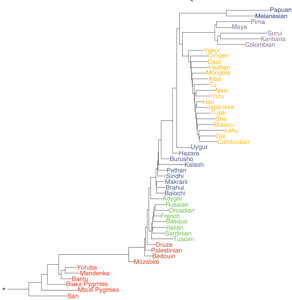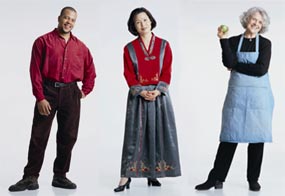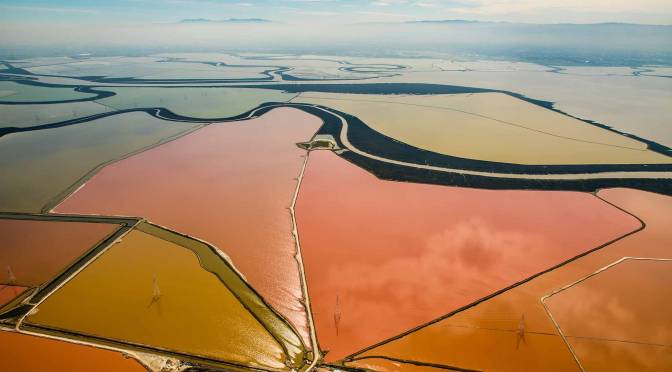It has to do with the fact that DNA changes over time. Everyone’s DNA is a little different from when they were a fertilized egg because of DNA mutations.
If a change happens in the DNA of an egg or sperm cell, then it will be passed to the next generation. So the group that stays longer in one place will build up more of these changes. Their DNA will be more genetically diverse.
Imagine it is 50,000 years ago and our ancestors are all in Africa. These folks have been there for hundreds of thousands or even millions of years. Over this time, there were lots of individuals all mixing their DNA. And their DNA was changing slightly generation to generation.
Now imagine that a few people develop a bit of wanderlust. They’re tired of Africa and want to see what the Arabian Peninsula looks like. So a small group takes off and heads over there. And doesn't return.

This group, which will go on to found Asia's population, is not nearly so diverse as the group they left behind. And the smaller the founding group, the less diverse their DNA will be.
Now 50,000 years later, here we are. East Africans have continued to mix and change from their big diverse starting population. Asians have mixed and changed too but from a smaller, less diverse starting population. So the East Africans are more genetically diverse than the Asians.
Now imagine it is 10,000 years ago. A small group of Asians heads over to Alaska and doesn’t return. This starting group is even less diverse than the original group of East Africans. Which helps explain why Native Americans are genetically less diverse than Asians.
The studies were so big that they were able to make even finer distinctions (see the tree to the right). And as data continues to pour in (especially from companies like 23andMe and DeCODEme),
scientists will be able to refine ancestry even further.
 Dr. Barry Starr is a Geneticist-in-Residence at The Tech Museum of Innovation in San Jose, CA.
Dr. Barry Starr is a Geneticist-in-Residence at The Tech Museum of Innovation in San Jose, CA.
latitude: 0.213671, longitude: 16.9849
 We are all Africans in our DNA.
We are all Africans in our DNA.
